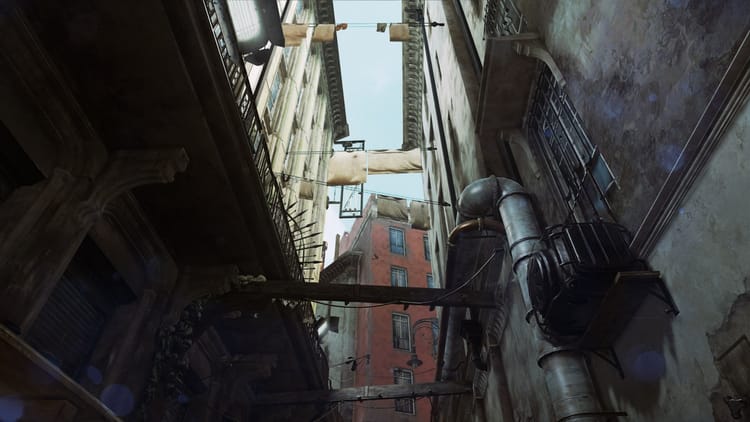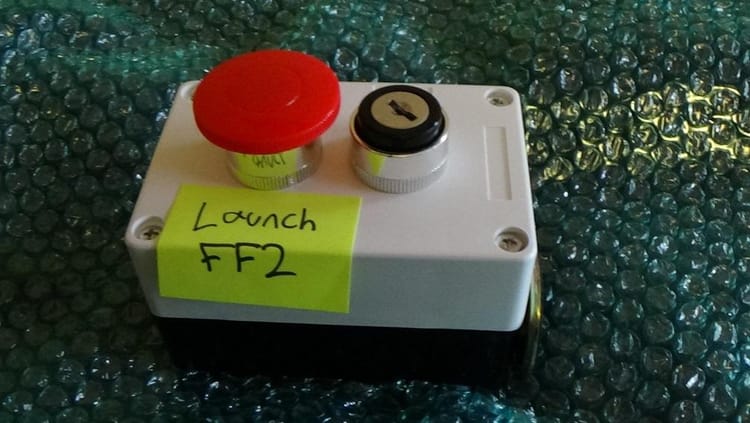What the hell is Cloverfield, anyway?
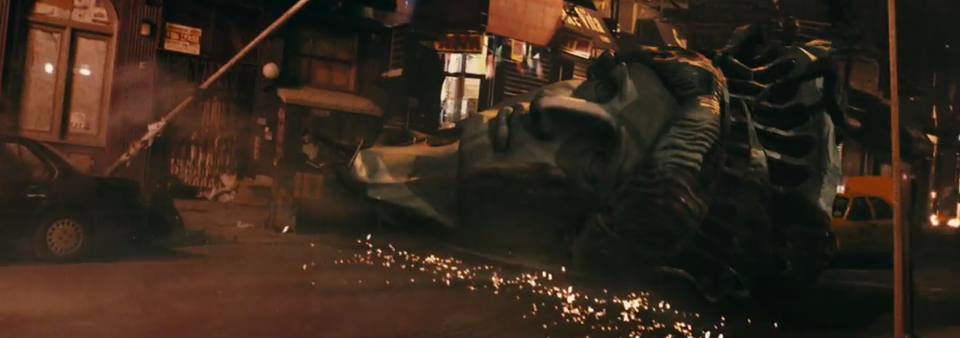
It all stands out to me as clear as yesterday. A scrawny, bright-eyed teenager circa ‘07, sat across the aisle with his friends, popcorn gripped between thighs, the SMS touchpads of flip-phones being thumbed impatiently. It’s the opening weekend of Michael Bay’s Transformers and we are ready to see some gigantic robots.
Our excited chatter is quickly hushed with the operant cue of the dimming house-lights and the sound of a worn projector sputtering to life. Images of an upscale house party fill the screen—a scene so far removed from our expectations that the question as to whether we were in the wrong theater slowly built traction. It continues: a DIY sizzle-reel of drunken goodbyes and half-hearted well-wishes… Something wasn’t right.
And then it happened. A primal roar bellows from out of the Earth. Calamity ensues. The night sky clots with molten shards of debris, crashing to the earth in fits. Hand-held footage spasms sharply before cutting to black. Then an ominous projectile whirrs and ricochets into a packed Manhattan street as a huddled mass of onlookers cries out in disbelief. The Statue of Liberty has been defamed by decapitation. A date— ‘1-18-08’— pulsates ominously across the screen before vanishing as abruptly as it appeared.
“What the hell was that?” I whisper, leaning over to my friend. He shrugs, a smile peeking at the corners of his mouth. “I have no idea.”
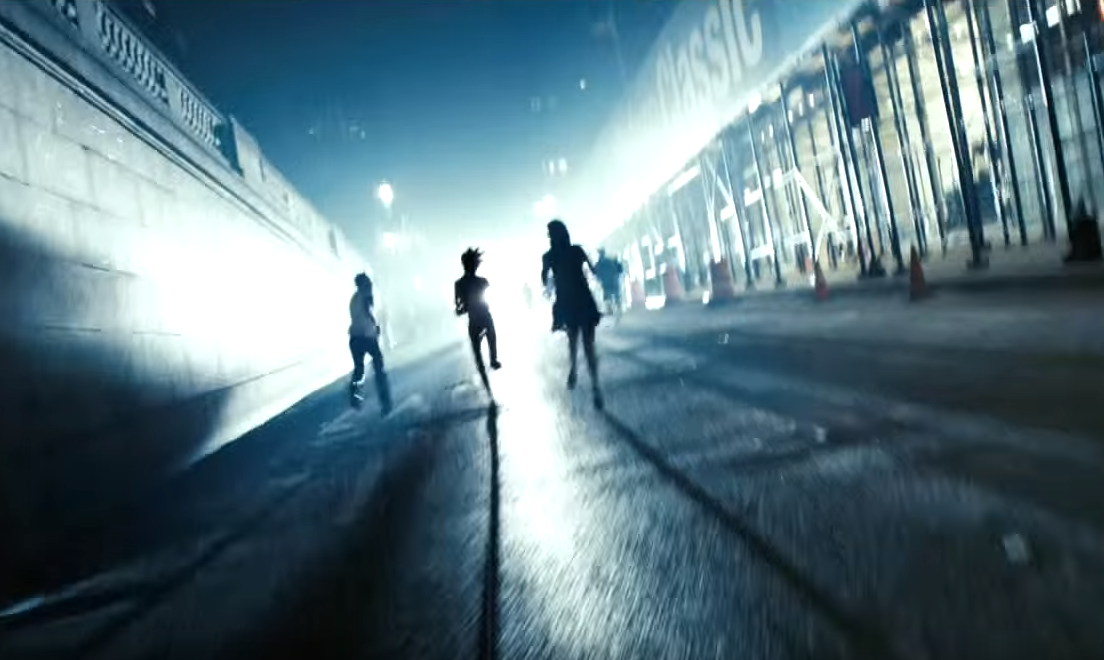
It’s a question that landed as heavy and unceremoniously as a severed head plummeting into the Earth. What the hell is Cloverfield? To begin to answer that question, we should acknowledge that what we once previously knew as Cloverfield exists both as something much larger than and a touch short of the span of an average feature-length film. There were, in fact, two Cloverfields: one produced by J.J. Abrams and the other directed by Matt Reeves. They exist simultaneously in a superpositional state of co-dependence, suspended in that quantum realm of speculative inference known only as pop-culture.
Cloverfield (2008), as a film, is inextricable from the marketing that preceded it, indebted to that mystique attributed to the stewardship of one J.J. Abrams. Say what you will about his hit-or-miss track record as a showrunner of television action-dramas, there’s one quality as a producer that Abrams has ingrained so intuitively well—it has become the defining mark of his professional success. Simply put, he understands that much of the appeal of a story is more in how it is told, and not necessarily in what is being told. He’s a seasoned architect of expectations, synonymous with expository puzzle-boxes and red herrings, luring audiences into theaters as if it were the answer to a riddle. And he’s good at it.
It’s a raw, messy attempt to depict that most inexplicable of tragedies
Away from all that, Cloverfield is entertaining genre fiction in its own right: a monster movie that lingers less on its titular American-bred kaiju and more on the physical and spiritual devastation that it leaves in its wake. That the film is the product of a post-9/11 world is of little debate, and it arguably stands as one of the best to emulate the totality of existential shellshock that haunts the aftermath of such a horrific event. For all its grating, half-baked dialogue and incredulous reliance on the framing device of T.J. Miller’s “camera work,” Cloverfield’s emphasis on the faux-documentation of its core cast’s reactionary panic and spur-of-the-moment sleuthing echoes the spirit of cinéma vérité. It’s a raw, messy attempt to depict that most inexplicable of tragedies, the devastating loss and displacement of human life amidst a catastrophe.
Toho’s many Godzilla films are the obvious spiritual precedent to Bad Robot’s Cloverfield. Abrams attests to this, his initial inspiration arising from a desire for America to have its own “King of the Monsters.” But the former is so much more than a shorthand for the entirety of a sub-genre. Godzilla—or Gojira as pronounced in his native land—is nothing short of a living monument to the collective sins of nuclear proliferation; the planet’s wrath made manifest. Compared to that, Cloverfield’s purpose pales in its ambition. Call it a back-door resurrection of sorts intended to atone for the missteps of Roland Emmerich’s abysmal take on the “God of Destruction” back in 1998. History has not been kind to Emmerich’s rendition, distinguishing it as single-handedly throttling the momentum of big-budget American monster films dead in its footprints. Less of a symbolic corollary, Cloverfield was more of a redemptive appeal to both audiences and filmmakers to give the genre another shot at relevancy. Did it succeed? The existence of films such as Pacific Rim (2013) and Welsh director Gareth Edwards’s 2014 rendition of Godzilla would seem to attest to it, no matter how many years removed they are from Cloverfield’s theatrical release. And yet the world has moved on since Cloverfield. Initial rumors of its potential follow-up, dating as far back as the original’s premiere, soon petered out in the wake of Abrams’s gradual ascendance to ringleader of two of the largest science-fiction epics in cinematic history: Star Wars and Star Trek.
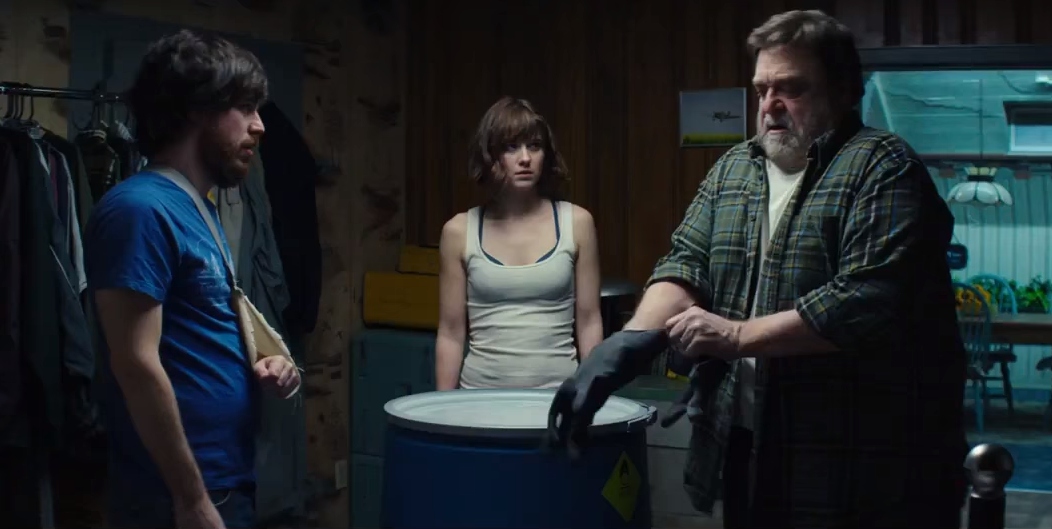
Which brings us to 10 Cloverfield Lane, a film eight years removed from its predecessor that seeks to test the limits of what general audiences are willing to accept as a follow-up. 10 Cloverfield Lane is equal parts Psycho (1960) meets The War of the Worlds (1898), with a generous splash of David Schmoeller’s Crawlspace (1986) thrown in for added flavor. Which is to say, it’s the story of an unwilling captive literally locked in a battle for supremacy against her self-styled “savior”—a Stockholm Syndrome-infused case of cat and mouse. Compared to Janet Leigh’s iconic turn as Marion Crane in Psycho, Mary Elizabeth Winstead’s Michelle in 10 Cloverfield Lane is a strong contemporary who has no patience for come-hither pouting and pleas of desperation. She is instead a woman of hard-nosed grit and merciless, patient cunning. She awakes to find her leg in a brace, chained to a wall. Among her first instincts is to fashion a lance-sized prison shiv out of the base of a crutch. She doesn’t fuck around.
Then there’s John Goodman’s Howard, whose omnipresence makes for an entirely different antagonist when compared to the brief, out-of-shot monster encounters of the first Cloverfield. He’s a power-starved recluse with a martyr complex and a nasty predilection for abducting young women to groom into his surrogate family. It’s a credit to Goodman’s craft that he’s able to render someone so sympathetic and yet utterly reprehensible, sometimes within the same scene. John Gallagher Jr.’s presence as Emmet—albeit short—injects some much-needed comedic flavor that breaks up this tempest of frayed egos and thinning tempers into digestible sequences. Particular praise is owed to Bear McCreary’s score, whose shrill intensity and prominence alone nearly asserts itself the status of a principal character. All in all, 10 Cloverfield Lane is a clawing captivity narrative marinating in a pressure-cooked broth of Hitchcockian menace. Yes, a tightly-wound thriller that unspools confidently into an overall interesting if trite conclusion, whose cliffhanger worryingly hints towards Battle: Los Angeles (2011) levels of genre flick hokiness. But is it a Cloverfield film?
nothing short of an attempt to redefine our preconceptions of the entire model of genre franchises
That’s a question whose answer exists, much like in a game of Jeopardy, in the form of another question. We return again to the mystery of what Cloverfield is, or better yet, what does Cloverfield mean? As stated by Reeves in a 2008 interview with LAist, the name ‘Cloverfield’ is little more than a malaprop, the word ‘Cloverdale’ misheard only to be appropriated into a motif. It’s a name questing for an identity, as equally at home attached to the broadside of a giant Kaiju revivalist effort as it is to a locked-room horror-thriller. Who knows where next it will graft itself, remora-like, tainting the underbelly of an unassuming genre flick with its presence. It’s near-impossible to see a movie like this in theaters and not find yourself within earshot of a row of teenagers excitedly trading their own theories, all the while clamoring for authoritative answers. This is the defining quality of which Abrams’s work most successfully traffics in; mysteries that entice the collective imagination, inciting the communal spectacle of speculation. In this way, 10 Cloverfield Lane could not be more faithful as a “blood relative” to Reeve’s monster film. They each share this most essential of qualities. And as such, the premature allegation lobbied by some critics that the film’s marketing is in some way ‘misleading’ rings as both ill-founded and, for lack of a better term, basic.
10 Cloverfield Lane, Trachtenberg’s debut, is more than worthy of inheriting the mantle of a ‘Cloverfield film’ simply by the way its ambitions and execution easily succeed in trumping those of its predecessor. Cloverfield’s sole intent was in trying to resuscitate a middling subgenre, while its successor is nothing short of an attempt to redefine our preconceptions of the entire model of genre franchises. What shape will the series take next? The appeal of Cloverfield is that it will keep us guessing. It’s a series that refuses the direct sequel logic we’ve come to expect. But it isn’t shapeless, as it operates by taking a motif and turning it on it’s head. Its power is in how it can take a nonsense word and transforms it into a symbolic shorthand for the many-sized monsters of our daily lives.


